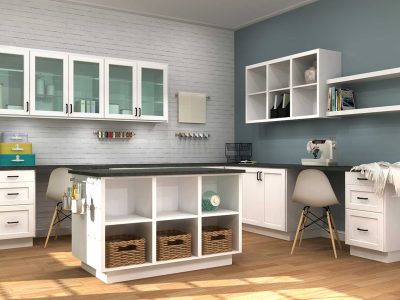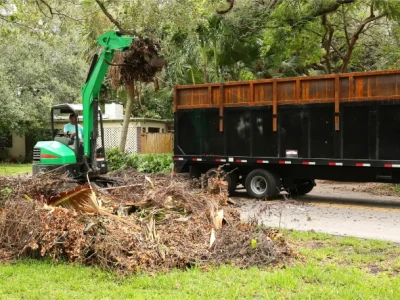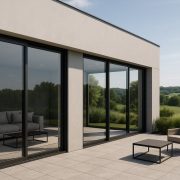Choosing the right aggregate can quietly make or break a landscape or building project, affecting everything from drainage performance to the way a path crunches underfoot. This guide introduces the range of materials typically available in a comprehensive catalog, explaining how crushed stone, gravel, and decorative options each serve distinct roles in modern residential and commercial applications. You’ll learn how to interpret specifications, pair base layers with finished surfaces, and select blends that support durability, safety, and design intent. Along the way, we’ll connect product choices to real-world criteria like climate, site conditions, and maintenance expectations, so decisions are grounded in outcomes rather than guesswork. The perspective here recognizes that a trusted supplier is more than a source of rock; it’s a partner in solving site challenges, and the Stone Center is often where that conversation begins. By the end, you should feel comfortable using the Aggregates Stone Catalog to compare options, request samples, and specify materials that deliver reliable performance with a cohesive look.
Overview of crushed stone, gravel, and decorative aggregate varieties
Aggregates fall into three broad families in most catalogs: crushed stone, gravel, and decorative aggregates. Crushed stone is quarried and mechanically fractured to create angular particles in predictable gradations, making it a go-to for subbases, driveways, and structural backfill. Gravel, often rounded by water action, includes river rock and pea gravel that are prized for comfort underfoot and a softer, more natural aesthetic. Decorative aggregates cover a wide spectrum—tumbled stone, polished pebbles, lava rock, and even specialty glass—that expand color and texture choices for high-visibility spaces. A well-structured Aggregates Stone Catalog will present these side by side with clear sizing, color notes, and recommended uses, so you can quickly shortlist materials suited to your site and style.
Common categories and characteristics
Crushed stone is typically identified by gradation numbers or nominal sizes, such as 3/8-inch chips, #57 stone, or screenings used for tight compaction. Its angularity creates interlock, which translates to stability in load-bearing layers and sharper edges along transitions where movement must be controlled. Rounded gravel, such as pea gravel or river cobble, sacrifices some interlock for improved comfort and a friendlier walking surface, which is ideal for seating areas and play spaces. Decorative aggregates push the palette further, offering tones from cool gray to warm buff and dramatic black, plus textures that vary from matte to polished for contrast with concrete, wood, or plantings. While aesthetics lead many decisions, it’s wise to consider how particle shape, size distribution, and surface finish will influence drainage, maintenance, and long-term appearance.
Functional and aesthetic roles of aggregates in construction
Aggregates do more than “fill space”—they manage loads, reduce frost heave, and control moisture around structures. Beneath pavements, a well-graded base layer spreads vehicle and foot traffic, preventing rutting and protecting finished surfaces like pavers or asphalt. Around foundations and retaining walls, open-graded stone channels water away, reducing hydrostatic pressure that can undermine structures and increase maintenance. In landscapes, ground covers discourage weeds, stabilize slopes, and moderate soil temperature, while also improving accessibility on paths and patios. Just as importantly, color and texture set the tone for a project, allowing neutral backdrops or strong accents to reinforce architectural intent, and the Stone Center can help tie these technical and aesthetic choices together.
Balancing form and function
A durable section build-up often pairs an angular base with a refined surface aggregate to achieve both stability and visual appeal. For instance, a pathway might rely on compacted crushed stone below and a thin layer of pea gravel above to soften the look without sacrificing performance, a blend that limits migration while maintaining a comfortable stride. Edge restraints, geotextiles, and thoughtful transitions at thresholds prevent material creep and keep the lines clean over time. Attention to gradation and moisture conditions during installation is equally key, as compaction and permeability depend on the right balance of fines and voids. The best designs acknowledge site realities—slope, freeze-thaw cycles, shade patterns—and match them with aggregates that complement the architecture without inviting ongoing repair.
Selecting materials for drainage, pathways, and ground cover
Choosing the right material begins with the job it must perform. For drainage, open-graded, washed stone with minimal fines leaves voids that rapidly move water, helping protect foundations, utility trenches, and French drains. Pathways demand a mix of compactability and comfort: smaller, angular particles lock together for stability, while a thin surface layer of rounded material can improve accessibility and appearance. As ground cover, aggregate should suppress weeds, resist wind displacement, and harmonize with planting schemes; color and size matter because they steer heat absorption and visual scale. Many specifiers browse the Aggregates Stone Catalog with these functional filters in mind, then narrow by texture and tone to create continuity across the site.
Practical selection steps
Start by documenting site conditions: soil type, expected traffic loads, slope, and water flow paths, including where runoff should enter or bypass aggregate areas. Next, assign a section build for each area—drainage trench, pathway, or bed—specifying base depth, gradation, and the use of geotextiles to separate fines and extend service life. For pathways, assess the desired feel underfoot, target a dense base, and confirm the final surface aggregate works with edging details to prevent migration into lawns or planting beds. In planting areas, choose a size that won’t smother stems or reflect too much heat, and consider light-colored stone to brighten shaded corners or dark tones to anchor sunlit expanses. Finally, request samples, place them on-site under actual light conditions, and verify that the chosen materials align with maintenance goals and available tools.
Environmental benefits of using recycled or local aggregates
Sourcing aggregates close to the project can materially cut transportation emissions while supporting regional quarries, recyclers, and jobs. Recycled materials—such as crushed concrete, reclaimed asphalt, or porcelain—divert waste from landfills and reduce demand for virgin stone without sacrificing performance in appropriate applications. Many open-graded layers and subbases accept recycled content readily, and when paired with proper geotextiles and compaction practices, they deliver long, dependable service. Landscaping applications benefit as well: recycled aggregates can provide visual interest and a story of reuse that strengthens a project’s narrative of stewardship. When you evaluate options through the Aggregates Stone Catalog, you’ll often see locally available and recycled choices flagged for easy comparison, and the Stone Center can explain where they’re most effective.
Measuring impact
Environmental gains are best demonstrated with numbers, so look for Environmental Product Declarations (EPDs), recycled-content documentation, and source distances to quantify benefits. Project teams pursuing certifications like LEED can often earn points by specifying regionally sourced or high-recycled aggregates, particularly in base layers or non-structural applications. Reduced trucking translates not only to lower carbon but also to fewer site disturbances and better cost predictability, especially on projects with tight schedules. Quality remains paramount: recycled aggregates should be screened for contaminants, sized consistently, and tested for durability to prevent future failures. When these controls are in place, the life-cycle performance of recycled or local stone compares favorably with virgin options, reinforcing a sustainable approach without compromising on function or finish.
Innovations in aggregate blending improving project sustainability
Blending aggregates is an effective way to tailor performance, aesthetic, and environmental outcomes simultaneously. By combining angular and rounded particles, designers can tune compaction and permeability, achieving bases that support loads while maintaining controlled drainage. Strategic blends also let you integrate recycled material—such as a percentage of crushed concrete—into a consistent matrix that meets gradation targets and reduces the need for virgin stone. In decorative applications, mixing complementary colors and textures creates depth and reduces glare, especially near highly reflective surfaces like glazing or water features. Modern stabilizers and binders, used judiciously with well-graded blends, further minimize migration and extend service life, lowering the frequency of replenishment and the embodied impacts of maintenance.
Implementation tips and case scenarios
Begin with a performance objective and build a gradation curve around it, selecting target percentages for coarse, medium, and fine fractions to manage voids and compaction. Mock-ups are invaluable: small on-site test panels help confirm color harmony, walking comfort, and how blends behave under light equipment before full deployment. For high-use paths, consider stabilized systems that lock blended aggregates together while preserving a natural appearance, adjusting moisture content during installation to achieve optimal set. Where stormwater management is critical, choose blends that maintain permeability under load, and pair them with edge restraints to keep sections intact on slopes or at tight radii. Over time, the right blend can reduce maintenance passes, limit washouts, and keep surfaces looking intentional, supporting sustainability by designing for longevity rather than frequent replacement.












Comments